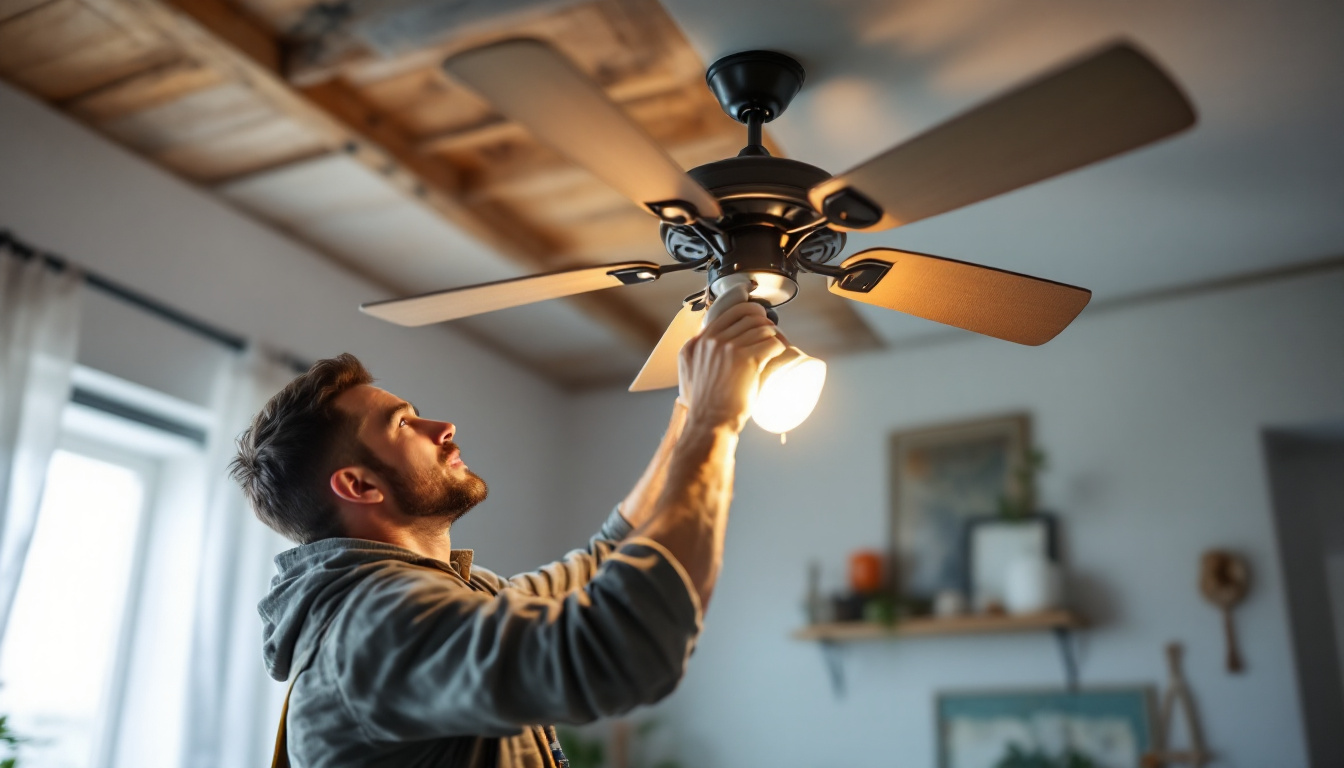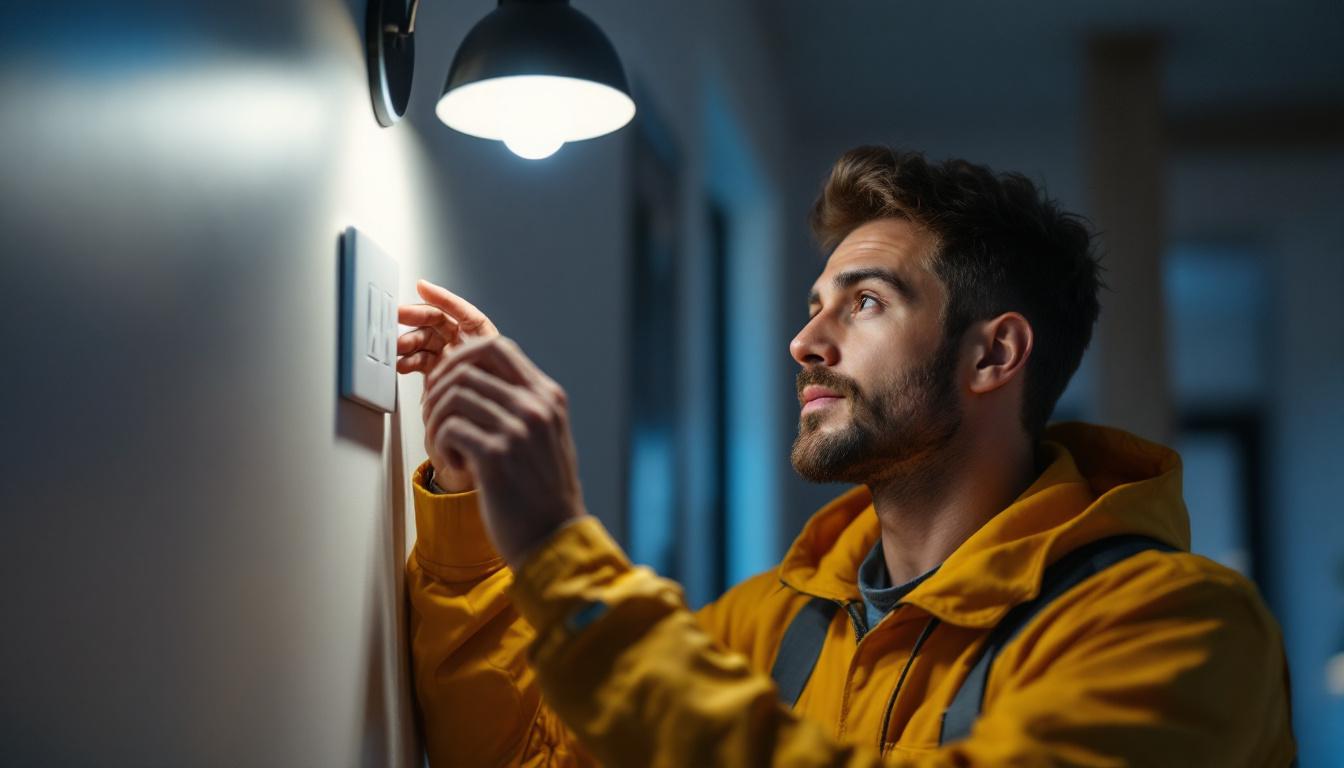
Lighting contractors play a crucial role in the design and implementation of lighting systems in residential and commercial spaces. One often overlooked component in these systems is the ceiling fan switch. While it may seem like a minor detail, the ceiling fan switch can significantly impact the overall functionality and aesthetic of a lighting project. This article explores the importance of ceiling fan switches, how they affect lighting contractors’ projects, and best practices for integrating them into designs.
Ceiling fan switches serve as a bridge between lighting and airflow, allowing users to control both elements from a single location. This dual functionality is particularly beneficial in spaces where comfort and ambiance are paramount. For lighting contractors, understanding the implications of ceiling fan switches is essential for creating comprehensive lighting solutions that meet client needs.
Integrating ceiling fan switches into lighting designs can significantly enhance the user experience. By providing a convenient way to control both lighting and ceiling fans, contractors can create a more cohesive and user-friendly environment. This is especially important in areas such as living rooms, bedrooms, and dining spaces, where comfort is key.
Moreover, the ability to adjust the ceiling fan’s speed and direction, alongside the lighting intensity, allows users to tailor the atmosphere to their preferences. This level of customization can lead to increased satisfaction and a stronger relationship between the contractor and the client. Additionally, incorporating smart technology into ceiling fan switches can elevate this experience even further. Home automation systems allow users to control their ceiling fans and lights remotely via smartphone apps or voice commands, making it easier than ever to create the perfect ambiance for any occasion, whether it’s a cozy movie night or an elegant dinner party.
In today’s environmentally conscious market, energy efficiency is a significant concern for both contractors and clients. Ceiling fan switches can play a pivotal role in promoting energy-saving practices. By allowing users to control ceiling fans in conjunction with lighting, contractors can help clients reduce their reliance on air conditioning and artificial lighting.
For instance, during cooler months, a ceiling fan can be set to run in reverse to circulate warm air, while lighting can be dimmed to create a cozy atmosphere. This not only enhances comfort but also contributes to lower energy bills, making it an attractive selling point for contractors. Furthermore, energy-efficient LED lighting paired with ceiling fans can maximize energy savings, as both elements work synergistically to maintain a comfortable environment. By educating clients on the benefits of such combinations, contractors can position themselves as knowledgeable partners in sustainable design, ultimately fostering a sense of trust and loyalty in their clientele.
Understanding the different types of ceiling fan switches available on the market is essential for lighting contractors. Each type offers unique features and benefits that can impact the overall design and functionality of a lighting project.
Traditional wall switches are the most common type of ceiling fan control. They typically allow users to turn the fan on and off and may include a separate switch for controlling the light fixture. While these switches are straightforward and easy to install, they may not offer the level of control that some clients desire.
Contractors should consider the specific needs of their clients when recommending traditional wall switches. In some cases, a simple on/off switch may suffice, while in others, more advanced options may be necessary to enhance the user experience. For instance, dimmer switches can be integrated for light control, allowing users to adjust brightness levels according to their preferences, which can be particularly beneficial in settings such as dining rooms or home theaters where ambiance is key.
Remote control systems offer a modern solution for ceiling fan and lighting control. These systems allow users to operate their ceiling fans and lights from anywhere in the room, adding convenience and flexibility. Many remote control systems also feature programmable settings, enabling users to create customized lighting and airflow schedules.
For lighting contractors, recommending remote control systems can set them apart from competitors. Clients often appreciate the convenience of controlling their environment without having to get up or walk to a switch. However, contractors should ensure that the remote system is compatible with the existing lighting and fan setup to avoid complications during installation. Additionally, some advanced remote systems come with features such as timers and sleep modes, which can help save energy and extend the lifespan of both the fan and the light fixtures.
As smart home technology continues to evolve, integrating ceiling fan switches into smart home systems has become increasingly popular. Smart ceiling fan switches can be controlled via smartphone apps or voice-activated devices, providing users with unprecedented control over their lighting and airflow.
For lighting contractors, understanding smart home integration is crucial. Clients may seek out contractors who can provide solutions that seamlessly fit into their existing smart home ecosystems. This not only enhances the functionality of the lighting project but also positions the contractor as a knowledgeable and forward-thinking professional. Furthermore, many smart ceiling fan switches come equipped with energy monitoring features, allowing users to track their energy consumption and make informed decisions about their usage, which can lead to cost savings over time. As the demand for energy-efficient solutions grows, being well-versed in these technologies can greatly benefit contractors in their service offerings.
While ceiling fan switches can enhance a lighting project, proper installation is critical to ensure they function effectively. Lighting contractors must pay close attention to various installation factors to achieve optimal results.
One of the first considerations for contractors is ensuring that the wiring is compatible with the chosen ceiling fan switch. Different switches may require specific wiring configurations, and failing to adhere to these requirements can lead to malfunctions or safety hazards.
Contractors should also verify that the switch is compatible with the ceiling fan and lighting fixtures being used. This includes checking the wattage ratings and ensuring that the switch can handle the combined load of the fan and lights. Taking these precautions can prevent future issues and ensure client satisfaction.
Moreover, it is crucial to consider the type of switch being installed, as there are various options available, including smart switches that allow for remote control and automation. These modern switches often require a stable Wi-Fi connection and may involve additional setup steps, such as integrating with home automation systems. Understanding the technological requirements and limitations of these smart devices can help contractors provide tailored solutions that meet their clients’ needs while enhancing the overall functionality of the lighting system.
Another critical aspect of installation is the placement of the ceiling fan switch. It should be easily accessible for users while also considering the overall design of the space. Contractors should strive to find a balance between functionality and aesthetics, ensuring that the switch does not detract from the room’s appearance.
Additionally, contractors should consider the height at which the switch will be installed. For ceiling fans, it is often recommended to place the switch at a height that is comfortable for most users, typically around 48 inches from the floor. This consideration can enhance usability and create a more pleasant experience for clients.
Furthermore, the surrounding environment plays a significant role in switch placement. For instance, if the switch is located near a door or in a high-traffic area, it should be positioned to minimize the risk of accidental activation. Contractors may also want to consider the use of dimmer switches in conjunction with ceiling fans, as this can provide users with greater control over the ambiance of the space. By thoughtfully integrating these elements, contractors can significantly improve the user experience and add value to the overall lighting project.
To maximize the benefits of ceiling fan switches in lighting projects, contractors should follow best practices that enhance both functionality and aesthetics.
Before finalizing any design, it is essential for contractors to consult with clients about their preferences and needs regarding ceiling fan switches. This dialogue can provide valuable insights into how clients envision using their lighting and ceiling fans, allowing contractors to tailor their recommendations accordingly.
By involving clients in the decision-making process, contractors can foster a sense of ownership and satisfaction with the final product. This collaborative approach can lead to better project outcomes and increased referrals for future work.
The lighting and home automation industries are constantly evolving, with new technologies and trends emerging regularly. Lighting contractors should stay informed about the latest developments in ceiling fan switches and related technologies to provide clients with the most up-to-date options.
Attending industry trade shows, participating in webinars, and following relevant publications can help contractors remain knowledgeable about the latest innovations. This commitment to staying informed can enhance their credibility and position them as experts in the field.
Ceiling fan switches may seem like a small detail in the grand scheme of lighting projects, but their impact cannot be underestimated. For lighting contractors, understanding the role of these switches, their various types, and best practices for installation can significantly enhance project outcomes and client satisfaction.
By prioritizing user experience, energy efficiency, and smart home integration, contractors can create lighting solutions that not only meet but exceed client expectations. As the industry continues to evolve, embracing the importance of ceiling fan switches will be essential for lighting contractors looking to stay ahead of the curve and deliver exceptional results.
Ready to take your lighting projects to the next level? At LumenWholesale, we provide lighting contractors with the highest quality, spec-grade ceiling fan switches and lighting products at unbeatable wholesale prices. Say goodbye to local distributor markups and hello to our extensive selection that meets rigorous industry standards. With free shipping on bulk orders, you can equip your projects with premium lighting solutions that enhance user experience, promote energy efficiency, and integrate seamlessly with smart home systems. Don’t compromise on quality or value—choose LumenWholesale for the perfect blend of affordability and convenience. Wholesale Lighting at the Best Value is just a click away.

Discover the essentials of using a step-down transformer to convert 480V to 240V in lighting projects.

Discover effective strategies for lighting contractors to tackle common challenges with electrical on/off switches.

Discover expert tips and essential considerations for lighting contractors when selecting and installing outdoor post lights.

Discover how leveraging a light fixture outlet can give lighting contractors a competitive edge in winning more bids.